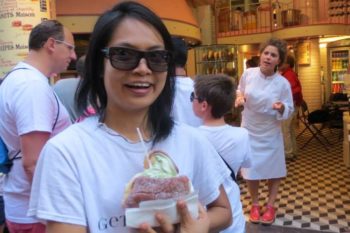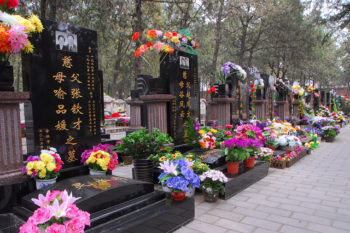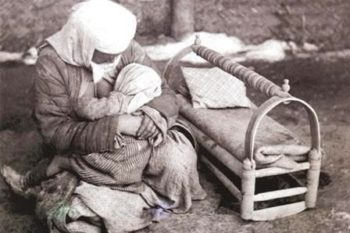
Golden Gate Bridge (from Curreyuk; Flickr, Creative Commons)
The San Andreas Fault runs parallel to California’s Pacific coast for 810 miles, a seismic fault line that separates the Pacific and North American tectonic plates. The result is that San Francisco and Los Angeles are actually moving closer to one another at the rate of an inch and a half annually, getting ready for a head on collision in a mere 12 million years. Despite this convergence, the two cities and their respective halves of the state could not be farther apart culturally.

Hollywood Sign (from Jorgemir; Flickr, Creative Commons)
California is the third largest US state in terms of size and it’s the most populous. The south has desert and beautiful beaches as well as a perfect Mediterranean climate. The north is mountainous with forests and a slightly cooler climate that is perfect for the Napa and Sonoma wine producing regions. Both regions have outstanding universities, the south having UCLA, Caltech and USC and the north having Stanford and UC Berkeley. The south is known for beaches, surf culture and Hollywood’s entertainment industry and the north is known for its wine region, Redwood forests, San Francisco’s large gay community, and the technology industry in Silicon Valley.
Migration has played a key role in California’s ethnicity. The Spanish settled California and built missions to spread Catholicism up until the Gold Rush of 1849, which was quickly followed by California’s entry into the United States in 1850. The Gold Rush brought people from all over, but particularly Chinese laborers who helped build the railroads.
Southern California has historically been more conservative, while Northern California has been more liberal, perhaps because the north tended to be settled by those from the more progressive northern US states and the south by the more conservative southern US states. As early as the 1860 Presidential election, Southerner John Breckinridge won in the southern California counties, while the more populous San Francisco Bay Area carried the state for northerner Abraham Linclon.
There is a friendly rivalry going on between northern and southern California. Northern Californians tend to look down on Angelenos as uncultured hedonists who are overly concerned with appearances. Southern Californians tend to see northerners as smug, chardonnay-swilling liberals who are provincial and self-congratulatory.
Given these differences and the friendly rivalry, it’s no surprise that there have been a few dozen proposals to split California into two political entities. Part of the problem is size; on the East coast, you could fit 7 or 8 states into an area the size of California. While there have been lots of proposals put forth over the years, none of them have gotten close to getting enough support to make it happen. For now north and south will have to be content to sling stereotype-laced barbs at one another as they ever-so-slowly move closer to one another.
Read more:
It’s Christmas in Chicago!
Buying a car in California
Annie Hall and the New Yorker’s view of Los Angeles





Jason, when I started to read this post, I thought you were talking about geology! haha! Nice post.
Why is this north-south divide so common around the world, I wonder?
Ana,
Yes, the north-south thing is too common to ignore…but how arbirary?
If I knew more about geology,I might have continued…just thought I’d borrow a geological idea to illustate a point.
Jason
So what about environmental concerns? Is that true for the whole of California or is one part more environmentally friendly than the other?
Liz,
I’d say that there is not a big difference between the level of environmental awareness/concern between the two. I’m sure you could point out specifics in either direction, but my opinion is that they are not that far apart.
Jason